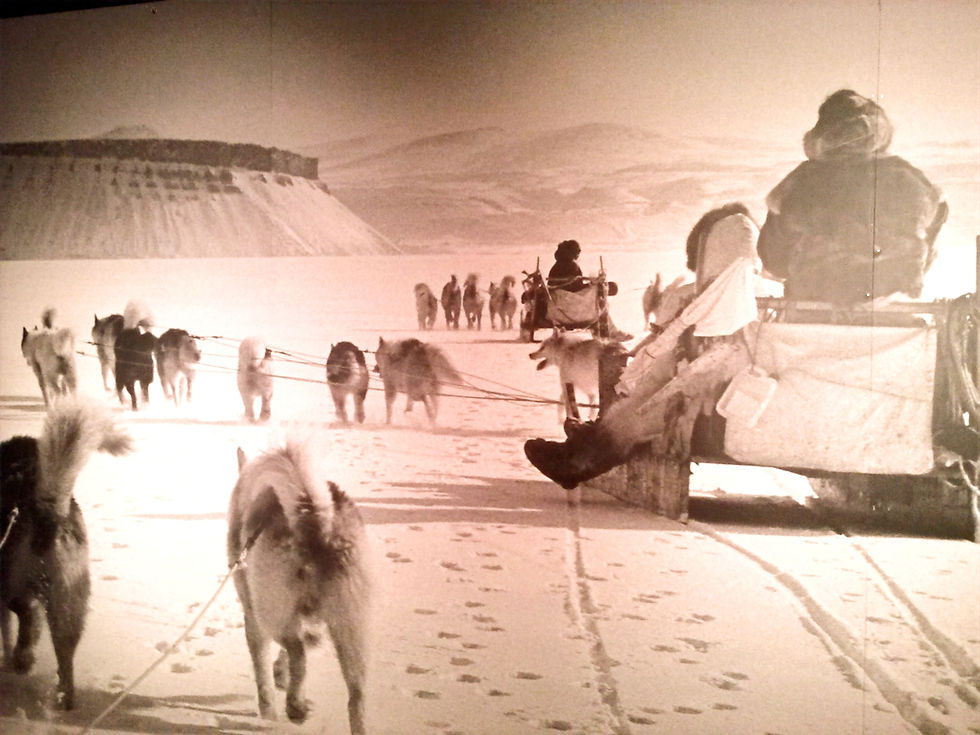GREENLAND
- Alex Parra Arcos
- Dec 14, 2021
- 4 min read

Is a large island located in the northeastern part of North America, between the Atlantic Ocean and the Arctic Ocean, politically constituted as a constituent nation of kingdom of Denmark. Greenland has been associated politically and culturally with Northern Europe. Over 77% of its surface is covered with ice and it is considered to be the largest island in the world its capital is Nuuk.
ETYMOLOGY

In the year 982, the Norwegian sailor and Viking explorer Erik Thorvaldsson (950-1003), called Erik the Red, because he had been banned from Iceland for the murder of several people, sailing to the west of Iceland discovered a huge island which he called in Danish language Grønland (in Dutch: Groenland, in Spanish: Groenlandia), which means "green land (or country)." Although the south of Greenland, not covered by glaciers, is only green during the summer, this name could have been a simple claim to attract settlers since the island from which Erik came, Iceland --Island means 'land of ice' -, it had more vegetation than Greenland.

HISTORY
The first inhabitants of Greenland were the Paleoeschymals.The prehistory of Greenland is a story of repeated waves of Paleo-Eskimo or Inuit immigration from the islands to north of North America. Being one of the most extreme geographical places of the cultural extension of these peoples, their lives were in constant danger and cultures were born and died over the centuries.The Thule are the ancestors of the current population of Greenland. No genes for paleoinuit have been found in the current population of Greenland The Thule culture migrated east from what is now known as Alaska around AD 1000, reaching Greenland around 1300. The Thule culture was the first to introduce technological innovations such as dog sleds and lever harpoons to Greenland. Abandoned the European colonies, the Inuit were the only inhabitants of the territory until the 18th century.
The Norwegian navigator Gunnbjörn Ulfsson was the first European to reach Greenland. The date of the establishment of the first colony, according to the sagas, was in 985. From 986, the west coast of Greenland was colonized by Icelanders and Norwegians. The Norse Greenlanders submitted to Norwegian rule in 1261 under the Kingdom of Norway. Later, the Kingdom of Norway entered into a personal union with Denmark in 1380 and from 1397 it was part of the Kalmar Union.
GEOGRAPHY
Greenland is located between parallel 59ºN and 84ºN, and in longitudes 11º W to 74º W. It is the third largest region in North America. At 2,522,000 km², Greenland is the largest island in the world after the mainland island of Australia. All the cities and towns of Greenland are on the coast that is free of ice, with the population concentrated along the west coast. The northeast area is occupied by the Northeast National Park.
ECONOMY
The economy depends on fishing and the export of fish. Shrimp export is the largest source of foreign exchange, along with the issuance and sale of postage stamps. Recently, oil reserves have been identified in coastal waters, comparable to half of the North Sea reserves.
TOURISM
Tourism increased significantly between 2010 and 2019, and the number of visitors went from 460,000 a year to 2 million. Condé Nast Traveler describes this high level as "over-tourism." One source estimated that 2019 revenue from this aspect of the economy was about 450 million crowns ($ 67 million). Like many aspects of the economy, this slowed dramatically in 2020, and in 2021, due to restrictions required as a result of the COVID-19 pandemic. Visitors will start arriving again in late 2020 or early 2021. Greenland's goal is to develop it "right" and "build more sustainable tourism in the long term." Greenlandic is the language of the majority of the inhabitants, spoken by about 50,000 people; Danish is spoken by a minority of European origin and is used in administrative matters. Both are the main languages spoken by the population.
Greenland's national dish is suaasat, a soup made from seal meat. Marine mammal meat, game, poultry and fish play an important role in the Greenlandic diet. Due to the glacial landscape, most ingredients come from the ocean. There is little use of spices, other than salt and pepper. Greenlandic coffee is a "flamed" dessert coffee (set on fire before serving) made with coffee, whiskey, Kahlúa, Grand Marnier, and whipped cream. It is stronger than the well-known Irish dessert coffee.
Suicide in Greenland is a serious social problem, and it is a notable national concern. The suicide rate in Greenland is very high. According to a 2010 census, Greenland has the highest suicide rate in the world. Other major social problems Greenland faces are high rates of unemployment, alcoholism, and HIV / AIDS. Rates of alcohol use in Greenland peaked in the 1980s, when it was twice as high as Denmark, and by 2010 had fallen slightly below the average level of consumption in Denmark (which is the 12th highest in the world). But at the same time, alcohol prices are much higher, which means that consumption has a high social impact.
TRANSPORT
There is air transport both within Greenland and between the island and other nations. There is also regular maritime traffic, but the long distances make the travel times long and the frequency low. There are practically no roads between cities because the coast has many fjords that would require a ferry service to connect a road network. The only exception is a 5 km long gravel road between Kangilinnguit and the former mining town of Ivittuut, now abandoned. Furthermore, the lack of agriculture, forestry and similar rural activities has resulted in very few rural roads being built.




































Comments